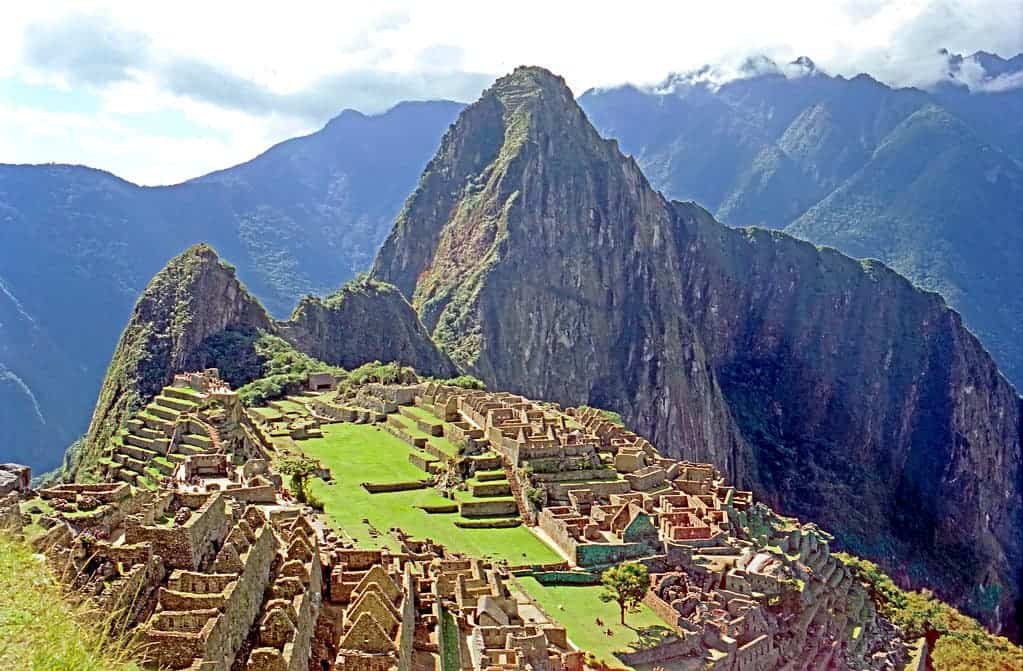The Incas—a civilization that ruled over vast areas of South America’s Andean region in the 15th and 16th centuries—intentionally built Machu Picchu, and other cites, in a location where tectonic faults meet, according to a new study.

The Incan citadel is located around 8,000 feet above sea level atop a narrow mountain ridge in the Andes. The reasons why the Incas chose this remote and inaccessible location have long remained a mystery to experts, until now.
A study by Rualdo Menegat showed that the decision may have had something to do with the location of tectonic faults—fracture zones between two blocks of rock in the Earth’s crust. These can range in length from a few millimeters to thousands of miles.
“Machu Picchu’s location is not a coincidence,” says Menegat. “It would be impossible to build such a site in the high mountains if the substrate was not fractured. It is part of a practice of building settlements in a high rocky place.”
Menegat used a combination of satellite imagery and field measurements to map a dense web of intersecting fractures and faults beneath Machu Pichu. His analysis indicates these features vary widely in scale, from tiny fractures visible in individual stones to major, 175-kilometer-long lineaments.
The researcher found that these faults occur in several sets, some of which correspond to the major fault zones responsible for raising the Central Andes. Because some of these faults are oriented northeast-southwest and others trend northwest-southeast, they collectively create an “X” shape where they intersect beneath Machu Picchu.
“Field investigations were carried out in four expeditions in 2001, 2006, 2010 and 2012,” Menegat said. “The analysis of satellite images was done in the laboratory. I also used various geological descriptions and studies of the Cusco region and the Sacred Valley.”
Menegat’s mapping suggests that the sanctuary’s urban sectors and the surrounding agricultural fields, as well as individual buildings and stairs, are all oriented along with the trends of these major faults.
At the same time, it also showed that some other Inca settlements in the region—such as Ollantaytambo, Pisac, and Cusco—were also built on top of fault intersections, like Machu Picchu. He argued that the Incas—who were master stoneworkers—deliberately chose sites like this at the intersection of faults
“Where faults intersect, the rocks are even more fractured,” he said. “Therefore, they are places that have more loose blocks on the surface, and also places where [the rocks] can be easily removed to build terraces and buildings. In addition, the blocks take on typical shapes such as triangles, hexagons, and rhombohedra. These forms fit geometrically on the wall mosaics of buildings,” Menegat said.
The researcher said that it would have been “impossible” to build such a site so high in the mountains if the rocks were not already fractured in this way. The Incas used these materials to create structures without mortar, featuring stones that fit together so perfectly, there are almost no visible gaps.
At the same time, the area at the intersection of faults may have provided other advantages. For example, the faults could have acted as a source of water, channeling rain and ice melt directly into the site. This allowed the Incas to build away from the bottom of valleys.
“About two-thirds of the effort to build the sanctuary involved constructing subsurface drainages,” Menegat said. “The preexisting fractures aided this process and help account for its remarkable preservation. Machu Picchu clearly shows us that the Incan civilization was an empire of fractured rocks.”
The findings “Geoarchaeological Insights into Paleoenvironmental Reconstruction and Cultural Dynamics” will be presented at the 2019 GSA Annual meeting in Phoenix.


